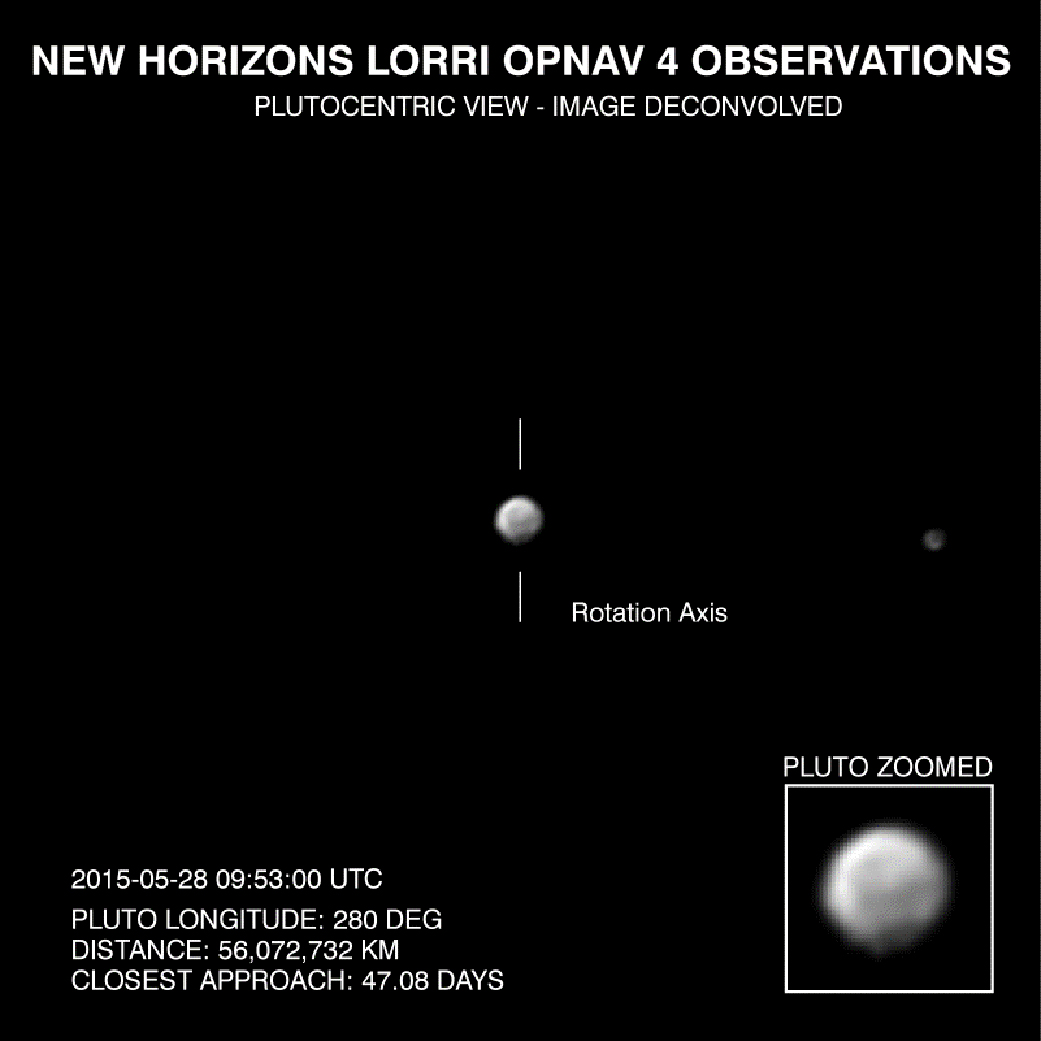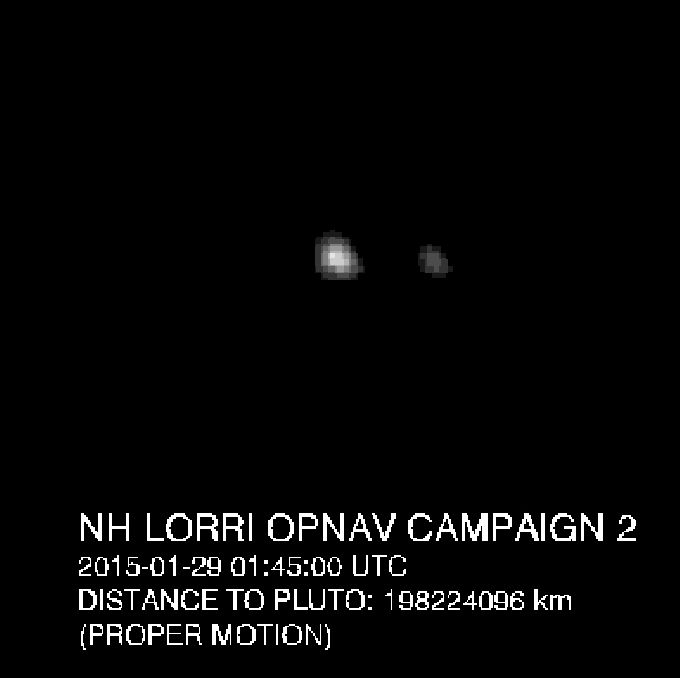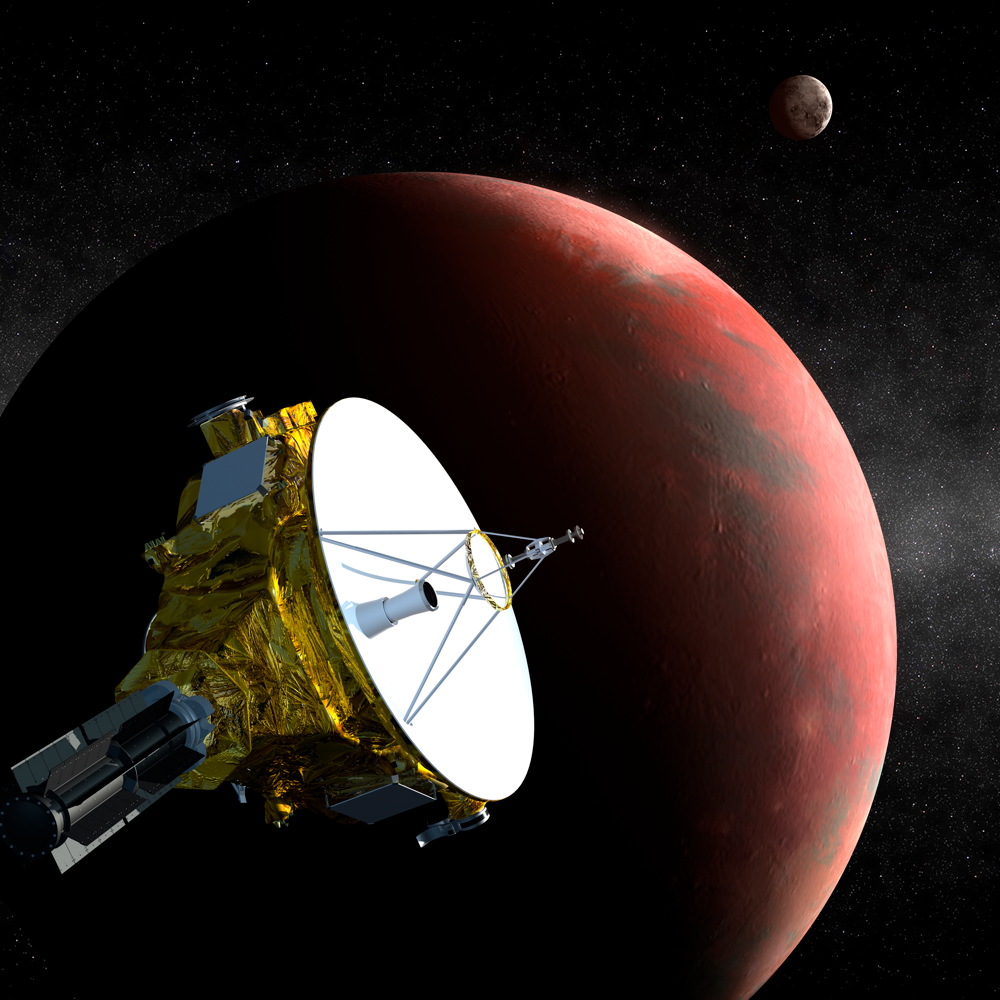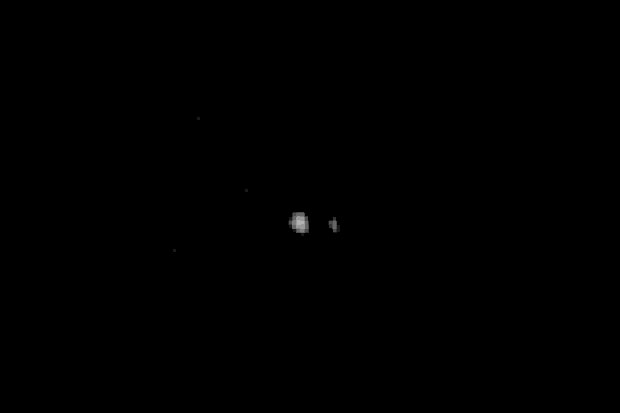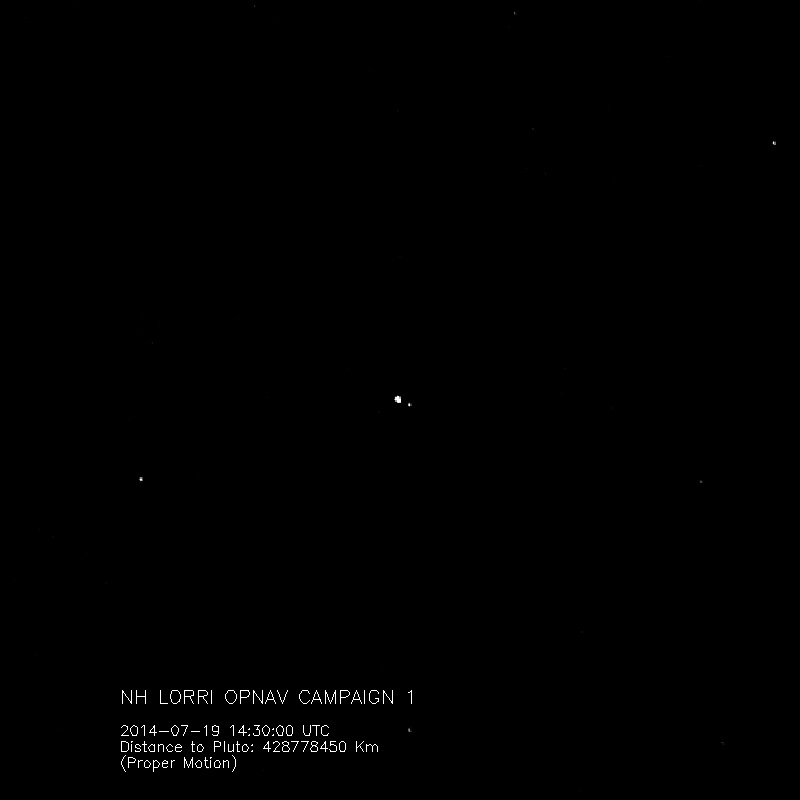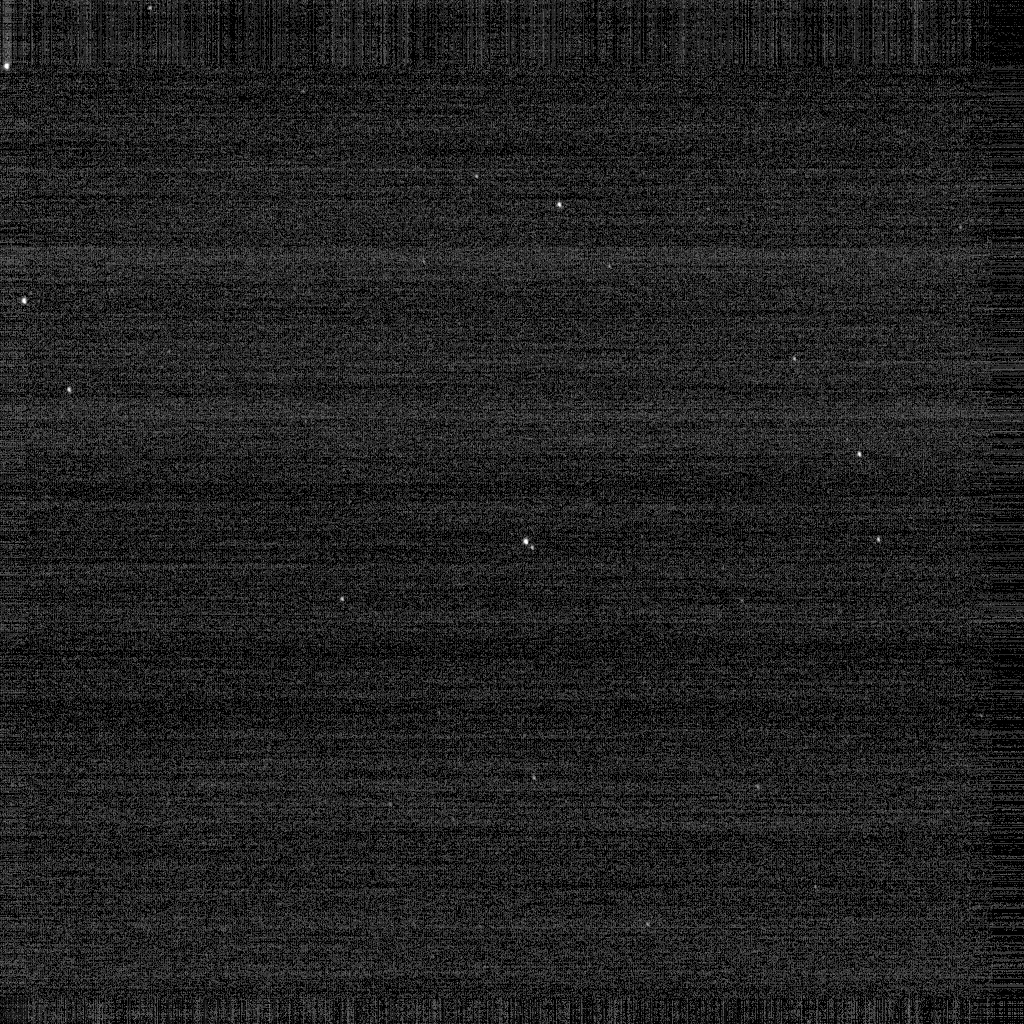Photos of Pluto and Its Moons
New Horizons' Image of Pluto Deconvolved
These images, taken by the LORRI instrument, have been processed using a method called deconvolution, which sharpens the original images to enhance features on Pluto. Deconvolution can occasionally introduce "false" details, so the finest details in these pictures will need to be confirmed by images taken from closer range in the next few weeks.
Comparison of Images of Pluto and Charon
This diagram compares images of Pluto and its large moon Charon, taken in July 2014 and January 2015.
New Horizons View of Pluto and Charon
This image of Pluto (center) and its largest moon, Charon, was taken by NASA's New Horizons spacecraft on Jan. 28, 2015 (Jan. 29 GMT).
Pluto and Charon on Jan. 27, 2015
Pluto and Charon, the largest of Pluto's five known moons, were seen Jan. 27, 2015, by the telescopic Long-Range Reconnaissance Imager (LORRI) on NASA's New Horizons spacecraft.
Pluto and Charon on Jan. 25, 2015
Pluto and Charon, the largest of Pluto's five known moons, were seen Jan. 25, 2015, by the telescopic Long-Range Reconnaissance Imager (LORRI) on NASA's New Horizons spacecraft.
New Horizons Probe Flying Past Pluto
Artist's impression of NASA's New Horizons probe flying past Pluto on July 15, 2015. Mission officials are currently looking for objects that the spacecraft could visit after this historic encounter.
Pluto and Its Moons: Art Views
This artist's view shows Pluto center, and its large moon Charon, as well as two of its four smaller moons (at top left and right). Pluto's four tiny moons are Nix, Hydra, Kerberos and Styx.
Breaking space news, the latest updates on rocket launches, skywatching events and more!
Pluto and Charon in Orbital Dance
The dwarf planet Pluto (center) and its largest moon Charon are seen by NASA's New Horizons spacecraft in this still from an animated set of photos captured between July 19 and 24 in 2014. The New Horizons images show how Pluto and Charon orbit a central point, known as a barycenter. New Horizons will fly by Pluto, a space first, in July 2015.
New Horizons Image of Charon Orbiting Pluto
A still image from an animated GIF show New Horizon spacecraft's view of Charon orbiting Pluto in July 2014.
New Horizons Sees Pluto and Charon
New Horizons spacecraft viewed dwarf planet Pluto and its large moon Charon (about 10,500 miles or 17,000 km. apart) with its LORRI camera, at a distance of over 249 million miles (400 million km.). Image released July 24, 2014.

Space.com is the premier source of space exploration, innovation and astronomy news, chronicling (and celebrating) humanity's ongoing expansion across the final frontier. Originally founded in 1999, Space.com is, and always has been, the passion of writers and editors who are space fans and also trained journalists. Our current news team consists of Editor-in-Chief Tariq Malik; Editor Hanneke Weitering, Senior Space Writer Mike Wall; Senior Writer Meghan Bartels; Senior Writer Chelsea Gohd, Senior Writer Tereza Pultarova and Staff Writer Alexander Cox, focusing on e-commerce. Senior Producer Steve Spaleta oversees our space videos, with Diana Whitcroft as our Social Media Editor.
